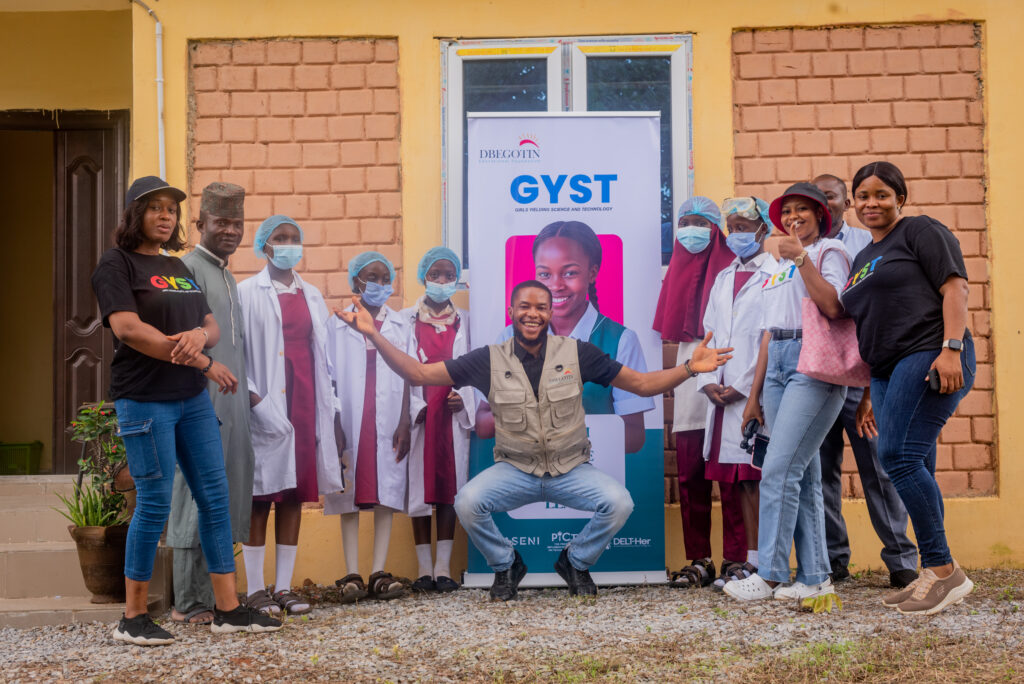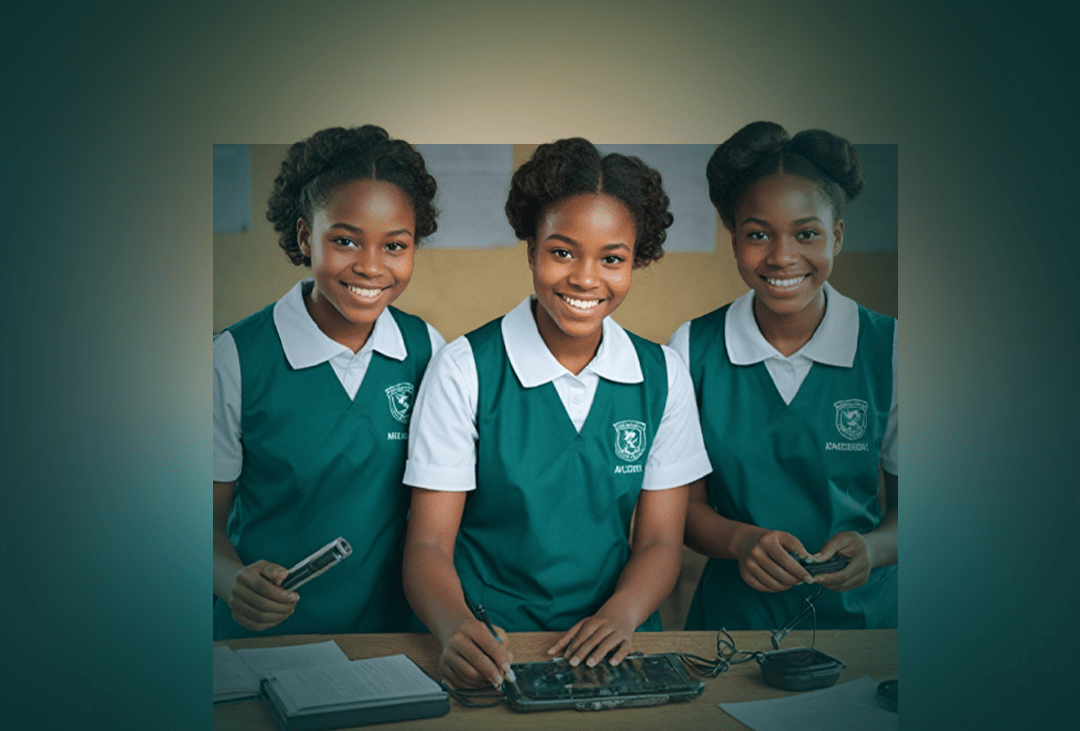Amina loved to sit under the mango tree in her family’s compound in Kano, watching the sky. She was fascinated by the way the stars twinkled and the moon shone. She wanted to understand them—how they shone, why they moved, and what secrets they held.
“That’s astrology,” her elder brother, Danladi told her, giving a small chuckle. “But you can’t be an astrologist. That’s a course for boys. You’ll study a more feminine course like Home economics or something,” he added dismissively. Amina thought about her brother’s words. Truly, no female in their community pursued such tedious courses. Most didn’t even advance to secondary school. After primary school, their families would marry them off to a suitor, as marriage was believed to be a girl’s ultimate destiny. That day, Amina wound her dreams in her wrapper, tied it around herself, and let it die. Afterall, there was no one to tell her that her dreams were valid.
***
Women and girls remain underrepresented in STEM fields across Africa. According to UNESCO, only 28% of STEM researchers in Africa are women (UNESCO Science Report, 2021). In Nigeria, while more girls are enrolling in science-related courses, retention and progression into professional STEM careers remain low. This is due to several key challenges, such as:
- Gender Stereotypes and Societal Norms
From an early age, many Nigerian girls are subtly discouraged from pursuing science. Cultural narratives often position STEM careers as “too difficult” or “better suited for men.” A 2018 UNICEF report found that 70% of Nigerian girls in rural areas believe that science is for boys, a perception reinforced by teachers, parents, and media portrayals.
- Limited Access to Role Models and Mentors
A significant challenge for female students in STEM is the lack of visible female mentors—both in schools and professional spaces. In Nigerian secondary schools, a vast majority of science teachers are male, making it difficult for girls to see a relatable pathway to success in science. A report by the African Institute for Mathematical Sciences (AIMS, 2023) revealed that less than 20% of science teachers in many African secondary schools are women. This absence contributes to a gap in mentorship and encouragement.
- Early Marriage and Family Pressures
Education for girls in Nigeria is still threatened by early marriage and societal expectations. According to the United Nations Population Fund (UNFPA, 2022), over 40% of Nigerian girls are married before the age of 18, cutting short their education. Many families prioritise marriage over higher education for their daughters, and science-based careers, which require years of study, are often deemed unsuitable.
The Mentorship Gap: Where Are the Female Role Models?
This article will focus on the mentorship gap in STEM, as mentorship is proven to be one of the most effective ways to increase female participation in STEM. The African Union’s Agenda 2063 recognizes mentorship as a key tool for increasing female participation in STEM. Female students who are inspired, guided and mentored by leading science women are more likely to believe in themselves and in their dreams. Many girls are unaware of the heights they can attain, and even the career opportunities in STEM, simply because they do not have access to professionals who can guide them. In fact, a 2021 study by Girls Education Initiative Nigeria (GEI Nigeria) found that 68% of Nigerian girls interested in STEM dropped out of science programs due to self-doubt and lack of encouragement. These girls’ stories would have been different if they had active mentorship. They need to hear stories of their female counterparts who broke barriers, who stepped outside their comfort zone. They need to learn how to go about it, how they can also achieve the same results. So the question is, where are these female mentors?
Across Nigeria, there remains a critical shortage of female STEM professionals who actively mentor younger girls. Since fewer women enter and remain in STEM careers, there are naturally fewer female mentors available.
Solutions: Creating a Stronger Mentorship Ecosystem for Girls in Science
With the fast-paced growth of science and technology around the world, it is important that we close the gender gap in STEM careers across Africa. We must encourage female and male participation in STEM, in order to have more hands contributing to the digital and tech ecosystem.
As we’ve established, one of the fastest ways to encourage and strengthen female participation in science paths is through effective mentorship. Some ways to increase female mentorship for students include:
- Establishing Female-Led STEM Clubs in Schools
Schools should have a science mentorship program led by women. Female scientists, university students, and professionals should engage with girls through workshops, career talks, and science fairs. Our GYST (Girls Yielding Science and Technology) project at Dbegotin Educational Foundation commits to nurturing the next generation of female STEM leaders, and one of our core approaches is mentorship. The GYST mentorship programme connects girls with successful women in STEM fields for guidance and inspiration. This programme currently reaches over 30 female students in schools across Gwagwalada, Kuje, and AMAC area councils, FCT-Abuja. With technology, these future scientists can connect with leading women in STEM across countries.

- Government and Private Sector Support
Government and private organizations must fund mentorship programs to connect female STEM professionals with students. Initiatives like Nigeria’s She STEMs Program and Women in Science Africa should be expanded to rural areas.
- Media Representation and Storytelling
We need to showcase more African female scientists in the media. Documentaries, books, and online platforms should highlight successful Nigerian women in STEM to inspire young girls. A 2022 survey by TechWomen Africa found that media representation of female scientists increased young girls’ interest in STEM by 40%.
A Future Where More Girls Thrive in Science
On this International Day for Women and Girls in Science, we must commit to bridging the mentorship gap for young girls in Nigeria and across Africa. When a girl sees a woman thriving in science, she sees a future where she, too, can succeed. By fostering mentorship, breaking stereotypes, and creating inclusive learning environments, we can empower more girls to lead in science, technology, and innovation.



